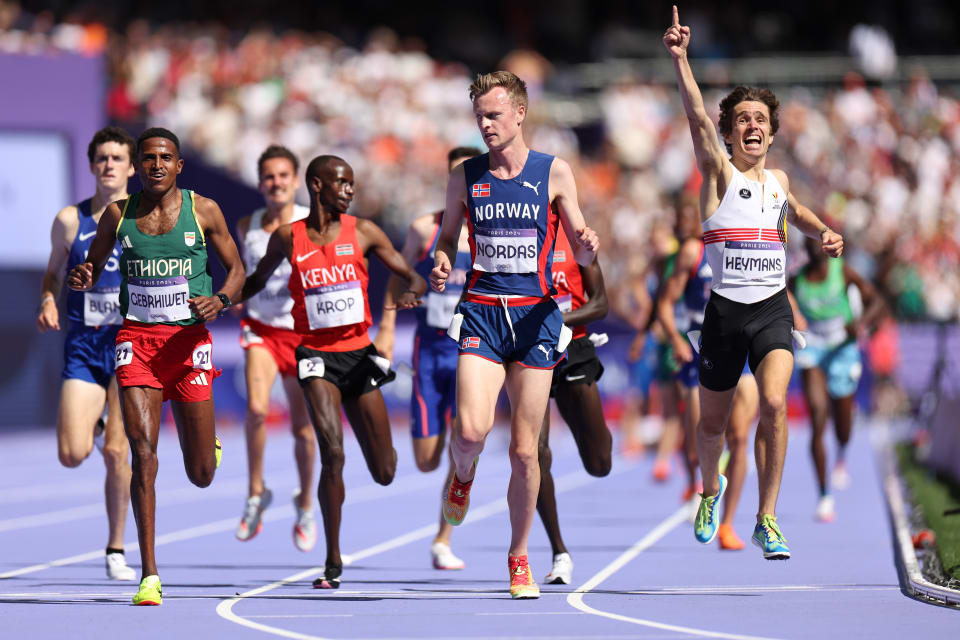Developer Offer
Try ImaginePro API with 50 Free Credits
Build and ship AI-powered visuals with Midjourney, Flux, and more — free credits refresh every month.
This Runner Used AI To Reach The Olympic Final
While many of us use AI to generate meal plans or write poems about our cats, Belgian runner John Heymans used it to achieve an audacious goal: qualifying for the Olympic Games.
An Olympian's Unlikely AI Coach
In 2022, with just two years until Paris 2024, middle-distance runner John Heymans embarked on his professional career with a radical idea. Instead of just focusing on running faster, he would use AI to strategically navigate the complicated Olympic qualification process. By leveraging ChatGPT and his own custom algorithms, he aimed to mathematically optimize his path to the 5000m event.
“I did something that nobody else in the history of athletics has done: use data analysis to optimise your race,” Heymans told Olympics.com. “It’s not only the best athletes who make it to the Olympics. It's really the ones who optimise their world ranking.”
From Algorithms to the Athletics Track
Heymans, who holds a Master's degree in bioengineering and nanotechnology, knew that raw talent alone might not be enough in his short two-year window. The qualification system offered two paths: achieve an incredibly fast time standard or accumulate enough points in ranked events to finish in the top 42 globally. Heymans saw his opportunity in the latter.
He began by scraping data from the World Athletics website to analyze ranking trends. “I wrote a machine learning algorithm that predicted how many ranking points I would need in 2024 to be inside the top 42,” he explained. His calculation was that he needed around 1215 points—a prediction that turned out to be shockingly accurate.
With a target score identified, he turned to ChatGPT to solve what he called a “mathematical optimisation problem.” He asked the AI which combination of races would maximize his chances of hitting 1215 points, based on three key factors: a race’s prestige, his likely finishing position, and his achievable times. As Heymans explains in a detailed breakdown of his process, the AI's advice was clear: focus on high-value indoor gold and silver-level races where a top-three finish was possible.
This data-driven plan defied conventional wisdom. “People told me I had to run 15 races to qualify. I said, ‘No, I need two perfect races.’”
The strategy worked spectacularly. In just three races, Heymans catapulted from being unranked to 31st in the world. He eventually solidified his spot by also beating the Olympic entry standard with a new Belgian national record, proving his approach was backed by elite performance.
The Race That Shocked Everyone
Qualifying was one thing, but performing in Paris was another. Surrounded by the world's best athletes, Heymans was energized by the atmosphere. On race day, in front of 80,000 screaming fans, he executed his plan perfectly, conserving energy before a powerful final surge to finish third in his heat and secure a spot in the Olympic final.
His success was so unexpected that it caught everyone by surprise, including his biggest supporters. “Nobody expected it because it seemed so unreachable for my level at the time. My family didn’t even buy tickets for the final because they didn’t think I’d make it!” he laughed. “It was one of the most beautiful days of my life.”
Heymans went on to finish an incredible 11th in the world, a monumental achievement that started with a clever algorithm.
The Balance Between Data and Passion
Despite his highly analytical approach, Heymans insists he is no “humanoid” runner who measures every single metric. He supplements his data-driven strategy by optimizing his gear and fuel, but his core motivation remains a deep love for the sport.
“My main driver is just what makes me happy. Aiming high makes me happy, because it leads to struggle, and struggle leads to satisfaction,” he explained. He believes true success comes from a combination of enjoyment, satisfaction, and meaning—all of which running provides.
What's Next for the AI-Powered Olympian
With one successful Olympic journey behind him, Heymans is now aiming higher. For the next Games, he plans to rely on pure speed, targeting the automatic time standard to qualify among the world's best without needing to optimize his ranking.
While he may no longer need AI to plot his race schedule, he admits it's still a useful tool for daily tasks like answering emails. His story serves as a powerful example of how human determination, when combined with machine precision, can turn an impossible dream into a reality on the world's biggest stage.
Compare Plans & Pricing
Find the plan that matches your workload and unlock full access to ImaginePro.
| Plan | Price | Highlights |
|---|---|---|
| Standard | $8 / month |
|
| Premium | $20 / month |
|
Need custom terms? Talk to us to tailor credits, rate limits, or deployment options.
View All Pricing Details


